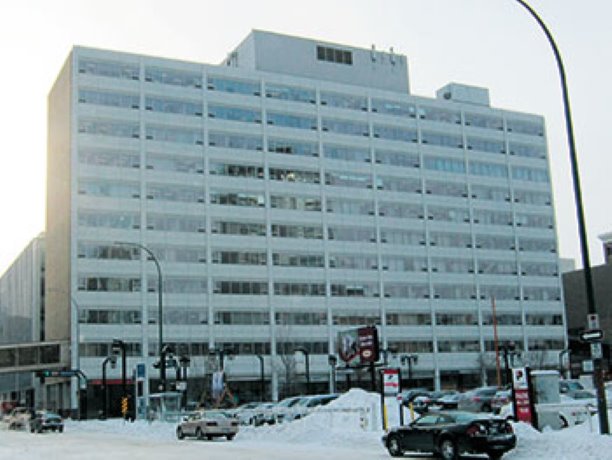Jack Abiusi describes the reconstruction of Winnipeg’s new central police headquarters as a tragedy.
“This is a perfect example of how a municipal infrastructure project can go wildly off the rails,” said the engineer and partner at Tower Engineering Group.
In 2010, Tower Engineering was one of four expert firms that responded to a city tender for due diligence on the project and to oversee the conversion of the former six–storey central Canada Post building and 10-storey office tower in downtown Winnipeg into a headquarters for the Winnipeg Police Service.
The purchase and conversion was originally pegged at about $130 million, but has so far reached more than $211 million and seems to be rising.
The saga began with city council’s need to replace the cladding on the soon-to-be former Winnipeg Police Service headquarters across from city hall.
This would have been a $20 million to $30 million project on a 30 to 40-year-old building, Abiusi noted.
For reasons that are still unexplained, city hall decided to replace the 30 to 40-year-old Public Safety Building with a 50-year-old building.
“Four of the best firms in Winnipeg were asked to bid on the project,” Abiusi said.
“The tender was incredibly comprehensive. We would have had to assign four people full time for 18 months on the project. Then, city hall without explanation pulled the tender. It was bizarre.”
There are a couple of aspects that are concerning to Abiusi.
“As a taxpayer, I am concerned when government infrastructure dollars are mismanaged,” he explained.
“And, as an engineer, one of my duties is to protect the public interest.”
Infrastructure projects should be well-planned and well built, he added, noting that a new police station in west Winnipeg was recently completed on time and on budget under a public-private partnership (P3) model.
“Nobody was arguing that the Public Safety Building was in need of repair or that the Police Service needed more space,” he said.
There were several other perfectly good buildings downtown, he added.
And, considering what the conversion of the Post Office building is costing, he said, it would have been less expensive to build from scratch on one of the many surface parking lots downtown.
“The (original) cost estimate didn’t take into account the cost of furniture, equipment and fixtures,” Abiusi noted.
As well, Bartley Kives, writing in the Winnipeg Free Press, reported that in the original design, the parking garage ceiling was too low to provide clearance for some of the police vehicles and interrogation rooms lacked secure ceilings.
City hall’s first step, Abiusi said, was to hire local engineering firm AECOM to draw up plans for the conversion.
“AECOM is a good firm,” Abiusi said. “After spending over $5 million on the plans, city hall fired AECOM.
“Why was AECOM fired? We don’t know.”
City Hall spent $160,000 on due diligence.
“Didn’t they uncover any of the problems with the Post office building?”he asked.
“Why wasn’t there a feasibility study to determine the precise needs of the Police Service?”
Abiusi noted that the city initially put the project out to tender, then, after receiving several bids, abruptly changed course and negotiated a contract turning to a design-build delivery method with a construction company, Caspian Projects (which refused interview requests). There was no explanation as to why the change occurred.
Bartley Kives in the Free Press also reports that while standard practice in construction projects is to call for a minimum 50 per cent performance bond, the city in early 2011, reduced the bond to 25 per cent of the estimated cost of construction.
City representatives are claiming, according to Kives, that the Surety Association of Canada encouraged the city to reduce the bond to 25 per cent, but the association vehemently denies the allegation.
According to Kives, in June 2011, the city assigned a project-management contract to a company called Dunmore Corporation to negotiate a “guaranteed maximum price” with the contractor, even though only 30 per cent of the final design was completed.
The final design was completed after construction had been ongoing for almost two years.
As well, Dunmore was supposed to report monthly to city on the project’s progress.
The guaranteed price never materialized.
“We, as a company, would have put the tender on hold if the drawings were just 30 per cent completed,’ Abiusi said.
“The city missed this simple and basic principle that you cannot guarantee a price on incomplete plans.
“City hall is trying to blame Dunmore and the contractor (as well as its CAO who resigned suddenly in October just before the release of an audit of another botched project to do with fire hall construction) for the cost overruns and problems. But where was the pre-planning? Where was the oversight?
He believes that the police should have been involved in the pre-planning.”
“Someone at City Hall at some point should have written out the scope for the project. There was no need to rush to buy the post office building,” he said.
“In all, there was a lack of vision and planning at City Hall,” he said.



Recent Comments
comments for this post are closed